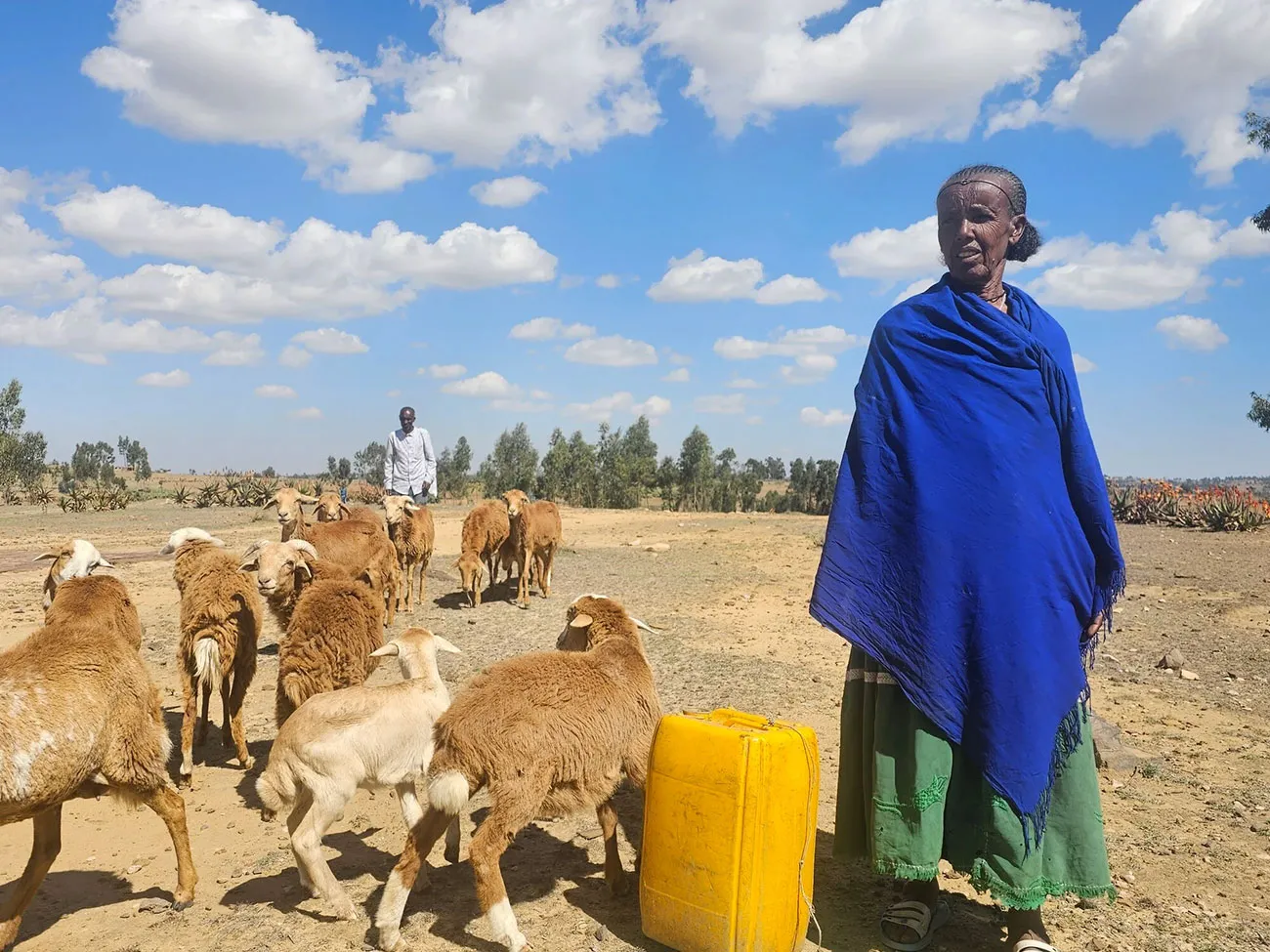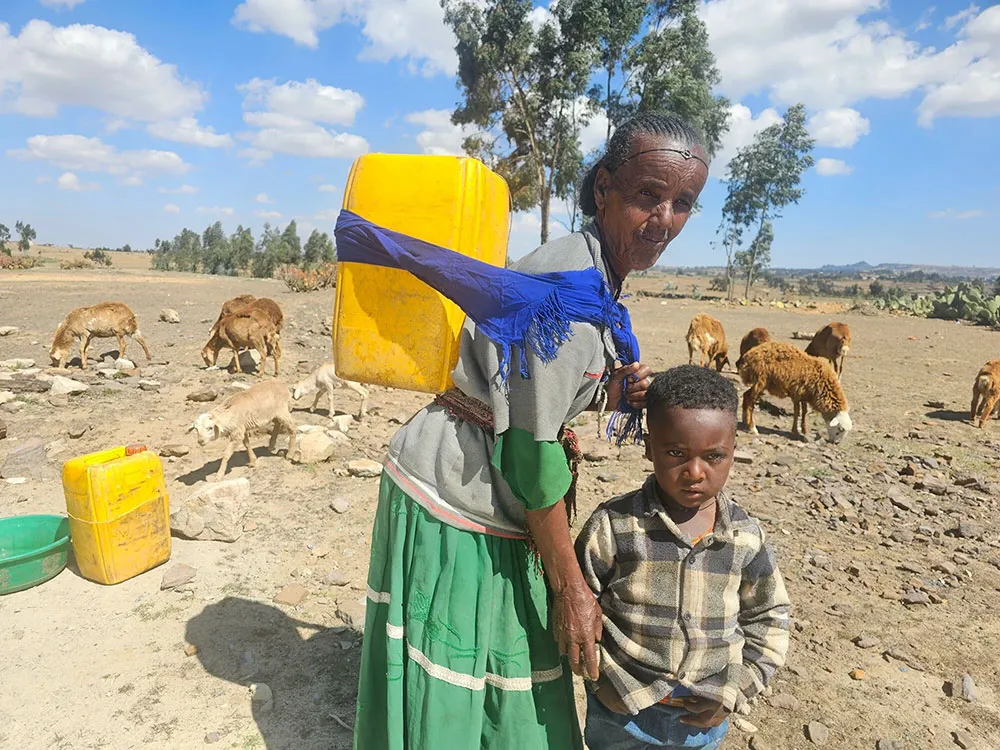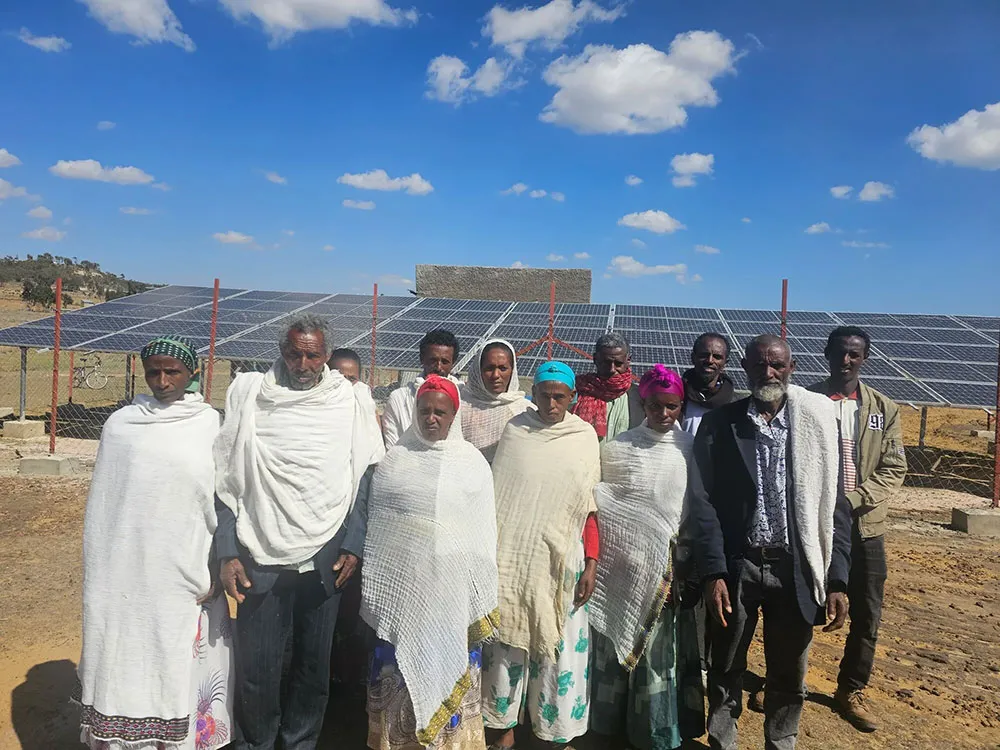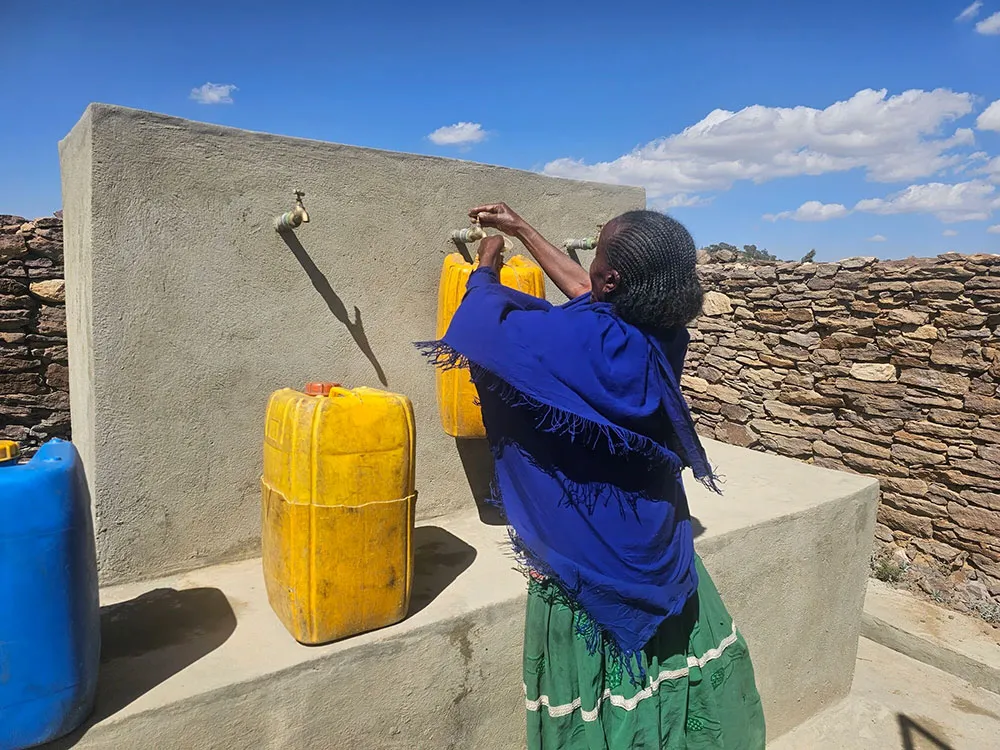Solar-powered water pump: A life-saving move
To tackle the water crisis, a community water committee was formed that counts Letensea as a crucial member. Before the conflict erupted, the committee installed a water pump running on a fuel-powered generator.
“The generator was often broken, and it was not powerful enough to supply water for everyone,” says Gebregergis, 75, another committee member.
When the conflict started, the community members could no longer afford to run the water pump.
“Fuel prices skyrocketed, jumping from just $1 per quart to $10,” Gebregergis says. “Moreover, fuel was not always available. We had to shut down the pump completely and resort to unsafe water sources once again.”
Using water from rivers or lakes poses a high risk of diseases including cholera. Such open water sources could easily be contaminated, for instance, by open-air defecation.
Thankfully, with the support of local partner REST, CARE has now installed a solar panel to power the water pump under SELAM project. Houses, schools, and clinics have been connected to the water system. Around 2,000 people can now access safe water through the taps distributed around the community.
“The burden for women and children has been reduced tremendously,” Gebregergis says.






